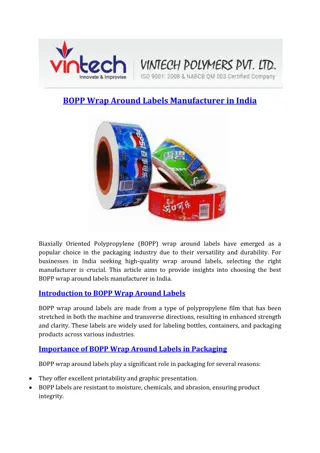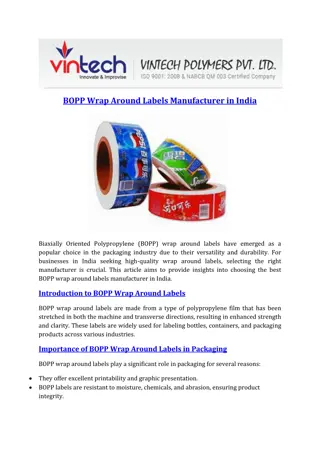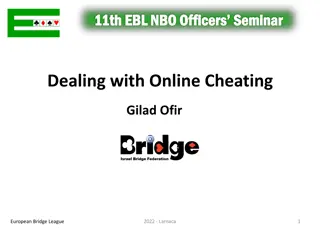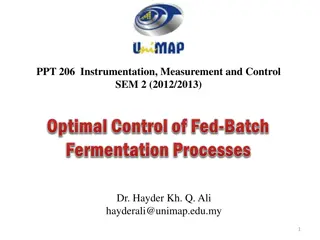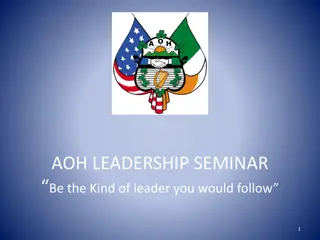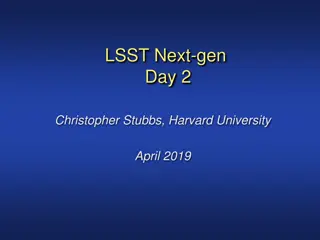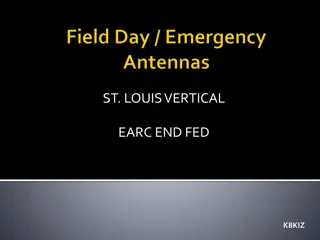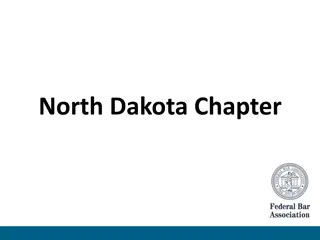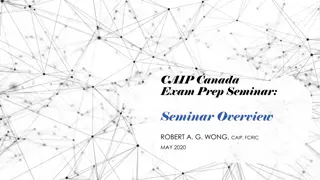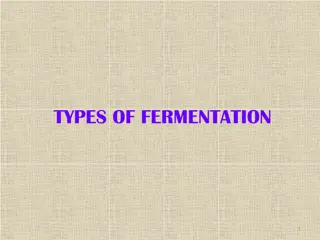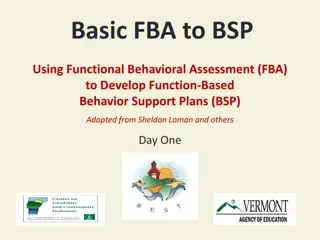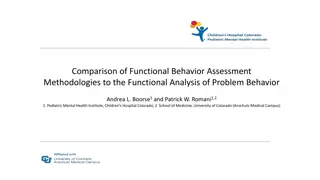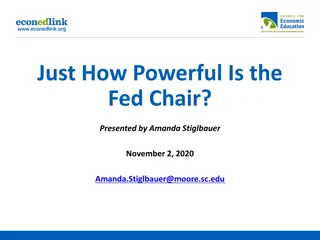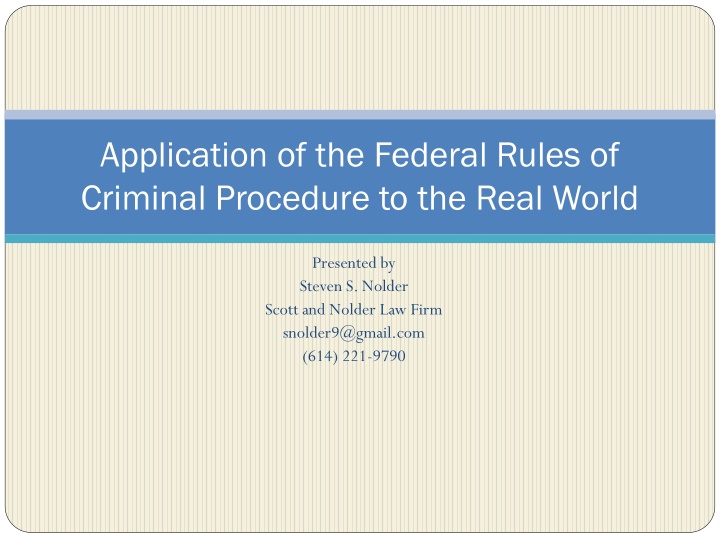
Application of Federal Rules of Criminal Procedure in Real World by Steven S. Nolder & Scott Nolder Law Firm
Explore the application of the Federal Rules of Criminal Procedure in real-world scenarios as presented by Steven S. Nolder & Scott Nolder Law Firm. From the criminal complaint to the arrest warrant and the initial appearance procedure, understand the legal process and rights of defendants under Fed. R. Crim. P.
Download Presentation

Please find below an Image/Link to download the presentation.
The content on the website is provided AS IS for your information and personal use only. It may not be sold, licensed, or shared on other websites without obtaining consent from the author. If you encounter any issues during the download, it is possible that the publisher has removed the file from their server.
You are allowed to download the files provided on this website for personal or commercial use, subject to the condition that they are used lawfully. All files are the property of their respective owners.
The content on the website is provided AS IS for your information and personal use only. It may not be sold, licensed, or shared on other websites without obtaining consent from the author.
E N D
Presentation Transcript
Application of the Federal Rules of Criminal Procedure to the Real World Presented by Steven S. Nolder Scott and Nolder Law Firm snolder9@gmail.com (614) 221-9790
Complaint--Fed. R. Crim. P. 3 The criminal complaint is a written statement of the essential facts constituting the offense charged.
Arrest WarrantFed. R. Crim. P. 4 Once a criminal complaint is prepared, an arrest warrant is issued for the defendant.
Initial AppearanceFed. R. Crim. P. 5 After his arrest, the defendant must be taken without unnecessary delay by his arresting officers to appear before a United States Magistrate Judge for an initial appearance;and If defendant is arrested in the district where the crime was alleged to have been committed, the initial appearance must be in that district.
Initial Appearance Procedure Inform defendant: (1) of the nature and meaning of the charge as well as the statutory penalties, (2) right to retain counsel or have counsel appointed if she is indigent, (3) Miranda rights, (4) right to a preliminary hearing, and (5) right to a bond hearing if the government seeks detention.
Initial Appearance Contd Corley v.United States, 556 U.S. 303 (2009) 9.5 hours after arrest for armed bank robbery, Corley gave a voluntary oral confession and 20 hours later, he gave a voluntary written confession after which he was presented for an initial appearance; Corley: If the voluntary confession occurred more than six hours after the arrest and before presentment, the district court must decide whether the delay was unreasonable/ unnecessary,and if it was,the confession must be suppressed;
Preliminary HearingFed. R. Crim. P. 5.1 Hearing at which the government must adduce evidence to show there s probable cause to believe the defendant committed the crime with which he s charged; Fed. R. Evid. do not apply but the right of confrontation does; Must occur within 14 days of IA if defendant in custody or within 21 days if he s on bond;and If probable cause is found, case is bound over to the federal grand jury.
Grand JuryFed. R. Crim. P. 6 Fifth Amendment provides a constitutional right to grand jury presentation for felony cases; 16-23 members 12 of whom must find probable cause before an indictment is returned; Indictment must be filed within 30 days of defendant s arrest (18 U.S.C. 3161(b)); No right for defendant to appear, present evidence, or have counsel present secret proceeding;and Waive grand jury presentation proceed on bill of information.
Indictment/InformationFed. R. Crim. P. 7 Indictment/Information--charging document for felonies; Must contain a plain/concise written statement of the essential facts that constitute the offense;and Must contain the essential elements to state an offense against the United States.
ArraignmentFed. R. Crim. P. 10 Ensures indictment/information, understands the nature and meaning of the charge, understands the statutory penalties, and will waive a formal reading of the charge(s);and Enter a plea. that defendant: has a copy with of counsel, the reviewed it
PleaFed. R. Crim. P. 11 3 pleas guilty,not guilty,and nolo contendere; Not guilty track toward trial/scheduling order; Guilty court ensures the plea is knowingly, voluntarily, and intelligently entered; Written plea agreement embodies the agreement between the defendant and the government; Court accepts or rejects the plea;and Court accepts or defers acceptance of the plea agreement.
Pretrial MotionsFed. R. Crim. P. 12 Scheduling order guides the filing of pretrial motions;and Examples of motions that must be filed before trial: motion to sever, motion to suppress, motion for discovery, motion alleging a defect in the indictment, and notice of intention to use evidence.
Discovery & InspectionFed. R. Crim. P. 16 Scheduling order governs when discovery and inspection occurs; Evidence subject to discovery: statements made during custodial interrogation, defendant s written or recorded statement made at a custodial interrogation, defendant s prior record, tangible objects/ evidence the government intends to use at trial, and reports of examinations and tests;and summary of defendant s
Discovery & Inspection If the defendant avails herself of the discovery process through Rule 16 and the government complies, then the government has the right to reciprocal discovery.
Jury SelectionFed. R. Crim. P. 24 No right to voir dire; Object of the exercise is to find 12 people who can be fair and impartial; Causal challenges unlimited; and Peremptory challenges government (6) and defense (10).
Witness StatementsFed. R. Crim. P. 26.2 Jencks Act--18 U.S.C. 3500; After witness testifies, counsel moves the court for the production of the witness prior statement; Statement includes: witness written statement that he either signed or adopted, witness recorded statement, or witness grand jury testimony; Reasonable opportunity for review; and Purpose of production use for impeachment.
Judgment of AcquittalFed. R. Crim. P. 29 After the close of the government s case-in-chief, defense lawyer must move for judgment of acquittal; Asking the court to consider the evidence, in the light most favorable to the government,and determine whether it could sustain a conviction on the charge; Motion must be renewed after the defense s case has closed; and If motion isn t made, it s waived.
SummationFed. R. Crim. P. 29.1 Government argues first; Defense argues; and Government rebuttal.
SentencingFed. R. Crim. P. 32 Presentence report must be prepared; Both sides have a right to have the report be both factually and legally accurate;and If either side has a problem with the report,must file written objections to frame the issue(s) for the district court s resolution.
Notice of AppealFed. R. App. P. 4 Notice of appeal must be filed by the defendant within 14 days of the filing of the judgment;and Within 30 days by the government.


